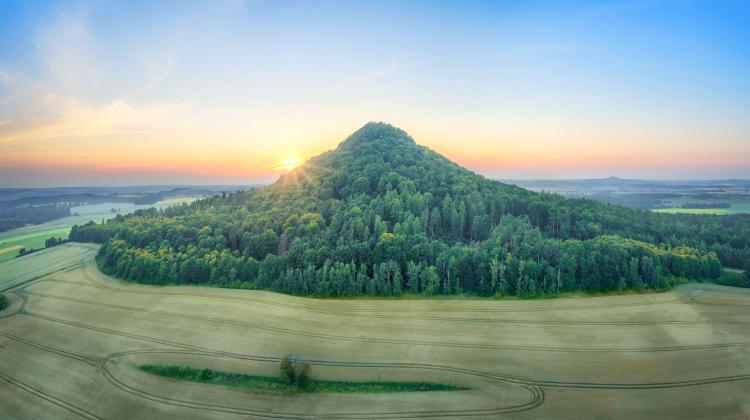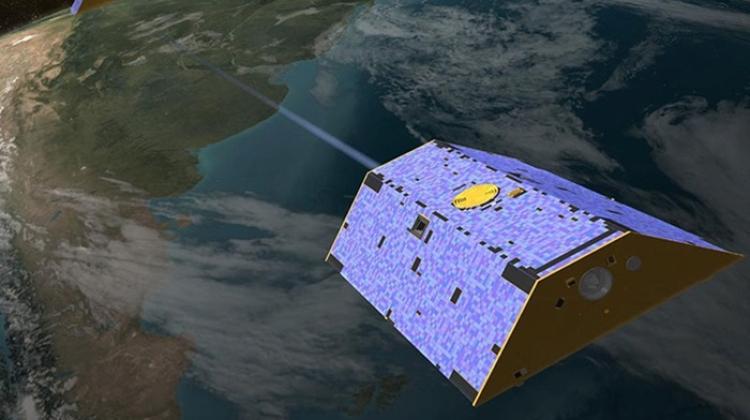Concrete, microplastics and implants will be all that remains of humanity, says geologist
 Credit: Adobe Stock
Credit: Adobe Stock
Concrete and microplastics will remain in layers corresponding to our geological period. Fillings, metal and plastic implants and plastic clothes will also survive, Professor Jan Zalasiewicz, a geologist and proponent of the establishment of the geological epoch called Anthropocene, told PAP.
Zalasiewicz, who is a professor emeritus at the University of Leicester, is one of the promoters of the Anthropocene concept. From 2009, he headed the Anthropocene Working Group established by the International Commission on Stratigraphy (the largest scientific body of the International Union of Geological Sciences), and in 2020 he became the head of the Subcommission on Quaternary Stratigraphy of the ICS. In 2023, he was awarded the Ig Nobel Prize for expertly explaining why some geologists lick rocks. The scientist is a descendant of Poles who came out of Siberia with Anders' Army.
PAP: There is a lively discussion whether the Anthropocene - the human epoch - has already occurred. Why is it even important to establish a new geological epoch?
Professor Jan Zalasiewicz: Mainly because the world has changed a lot. The oceans and atmosphere have a different chemical composition than they did just a few decades ago. The increase in the amount of greenhouse gases in the atmosphere and global warming are facts. The physical structure of the Earth is also changing under the influence of human activity, and because of us, much more sediment and rocks are moving on the planet's surface. We are also interfering with biology - on the one hand, many species become extinct, on the other hand, we have homogenisation of the biosphere caused by the transfer of plants and animals between different regions and continents.
All these changes leave geological traces. Sedimentary layers formed over the last 50 or 70 years are full of microplastics and synthetic radioisotopes. Current climate change will have repercussions for tens of thousands or even hundreds of thousands of years. Biological changes are permanent.
Therefore, the Anthropocene - the basis of which was developed by Dutch Professor Paul Crutzen, among others - is already here. The new epoch is not just a topic of academic debates, but a reality. It has not yet been formally included in the stratigraphic table because the International Commission on Stratigraphy and the International Union of Geological Sciences that supervises it have not accepted it.
PAP: Why?
J.Z.: There was too little discussion and the decision to reject the Anthropocene was not made based on evidence. Meanwhile, our Anthropocene Working Group has plenty of evidence. But the Anthropocene is a new idea that also includes elements that geologists usually do not take into account. For example, according to many researchers, concrete or plastics do not fit into the conservatively perceived geology, and human activity does not yet fit into geological time.
I think we are dealing with a similar situation as before, when other new, radical ideas appeared. The theory of plate tectonics, or the hypothesis that a meteorite impact killed dinosaurs 66 million years ago, were highly once controversial. Initially it was rejected by many conservative geologists, and it took a long time to convince them. The Anthropocene is such a new idea that challenges many previous concepts. We knew there would be resistance to its formal acceptance.
PAP: But the Anthropocene Working Group continues its work?
J.Z.: Yes, we are still working. We may have to wait for a new generation of scientists who will not be so attached to the classical concepts of geology. However, for this concept to break through among geologists, we still need a lot of time and work.
PAP: You talk a lot about time. Perhaps these changes are happening too quickly from a geological point of view?
J.Z.: This is indeed one of the reasons for the Anthropocene dispute. This epoch has lasted for a very short time, about 70 years - that is, as long as a human life. How can the time of one human life be an epoch? To me, the answer is obvious when we look at a graph of the rate of human-caused change. Until recently, there was a horizontal line on the graph: people appear on Earth, farm, build cities and empires, but the planet remains the same. Less than a century ago, however, there was a near-vertical peak.
There is an analogy: Sixty-six million years ago, a meteorite hit the Earth in Mexico. The event occurred in a blink of an eye, but it caused colossal changes to the planet. Millions of species became extinct, the domination of dinosaurs ended, mammals began to develop. Seventy years after the meteorite impact, the world was completely different. Now we are at a similar moment of change, we cannot return to Holocene conditions.
PAP: Has any other species had a similar impact on Earth as humans?
J.Z.: Two and a half billion years ago, a certain microorganism - probably a bacterium, or rather a group of various microorganisms - permanently transformed the Earth. It began using sunlight to convert carbon dioxide into oxygen and water. Photosynthesis caused the atmosphere to fill with oxygen. For the microbes of that time, oxygen was a toxic substance, so many of them died. Those that adapted survived, and then other oxygen-resistant organisms developed. That process took hundreds of millions of years.
The next breakthrough probably occurred about six hundred million years ago, when the first organisms capable of moving using muscles appeared. They could move around in their environment, swim, crawl, bury themselves in the ground. Animals disturbed sediment layers and caused physical and chemical changes on the Earth's surface. Later rocks were full of traces of these creatures. It was also not one species, but many groups of organisms.
The impact of human activity on the planet can be compared to those events. However, there are two important differences. Firstly, a single species, Homo sapiens, is now responsible for profound changes, and secondly, changes on Earth are taking place at a much faster rate. In this respect we are unique in the history of the world.
PAP: What traces of people will remain in the sediments that perhaps someone will study in millions of years?
J.Z.: The layers corresponding to our epoch will certainly contain concrete and plastics. Metal objects, such as cans, may retain their shape, but they may also change into other compounds, for example, through oxidation or mineralisation, they may turn into carbonates or sulphates. Glass will also remain, but will likely be opaque - it will tarnish over time like volcanic glaze.
There is no doubt that we will leave behind a very clear fossil record. Future geologists will have no problems finding traces of the Anthropocene.
PAP: Will human skeletons also be preserved, like dinosaur remains?
J.Z.: Human bones and teeth may be preserved, but they will constitute a new type of fossil. Our skeletons began to change about a hundred years ago. Metal tooth fillings appeared, then hip prostheses and other implants made of plastic and metal. Those will remain almost intact despite the passage of time.
Our clothes will also be preserved. Modern archaeologists do not find many clothes in remains from centuries and thousands of years ago, because natural fabrics decompose quickly. But today we produce plastic materials that are much more durable than cotton and wool.
PAP: It is said that we are in the period of another, sixth great extinction. Can it also be 'seen' from a geologist's perspective?
J.Z.: There is no doubt that the extinction rate has significantly increased. Today, it is estimated to be hundreds or thousands of times higher than the extinction background level known from the fossil record (the so-called extinction background is from 10 to 100 species per year - PAP). This is not the beginning of this process, our ancestors successfully wiped out mammoths and woolly rhinos from the face of the Earth.
But - in my opinion - it is not extinction that constitutes the most important geological signal of our impact on the planet. More importantly, we are responsible for moving countless species of animals and plants between continents and oceans. This phenomenon, which has intensified with international travel and global trade, is leading to the homogenisation of ecosystems on our planet. We have changed biology in every corner of the Earth on an unprecedented scale and in an exceptionally short time.
PAP: Previous great extinctions led to the disappearance of a huge number of species, and new ones appeared in their place. Could the process we are seeing now open an evolutionary gateway for new creatures?
J.Z.: Almost certainly yes - provided that the catastrophic impact of humans does not wipe out all life from the Earth. The existence of each species that survives will be the starting point for a new type of life that will develop in the future.
It is difficult to predict what life on Earth will look like in the future, and several interesting publications on this subject have been published. We can imagine rats growing as big as elephants, or rabbits becoming as big as antelopes. You can speculate all you want, but no one has any idea what direction evolution will take. There is no doubt, however, that changes await us also in this area. (PAP)
PAP - Science in Poland, Anna Bugajska
abu/ zan/ amac/ kap/
tr. RL
Przed dodaniem komentarza prosimy o zapoznanie z Regulaminem forum serwisu Nauka w Polsce.



















